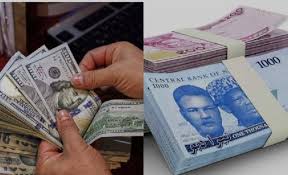The Nigerian naira lost a little ground in the official foreign exchange market on Monday, slipping from N1,535.03 to N1,536.42 per dollar. The minor drop, according to market analysts, was largely caused by slower foreign exchange inflows, which made traders and investors tread cautiously.
Data released by the Central Bank of Nigeria (CBN) showed that the naira weakened by N1.39 against the dollar at the Nigerian Autonomous Foreign Exchange Market (NAFEM). However, the parallel market, popularly called the black market, recorded a small gain. The naira moved from N1,545 per dollar to N1,540, giving currency traders in that segment a slight boost.
Reports from Coronation Merchant Bank gave more insight into the week’s activity. The bank noted that total foreign exchange inflows into the Nigerian market fell to $751.70 million, compared to the $787.50 million recorded in the previous week. Exporters were the largest contributors, bringing in $216.10 million, which accounted for 28.75 percent of total inflows. Non-bank corporates followed closely with $203.90 million, or 27.24 percent, while foreign portfolio investors, also known as FPIs, contributed $175.60 million, representing 23.36 percent. The CBN itself injected $137.40 million into the market, making up 18.27 percent, while individuals and smaller channels provided the rest.
Despite the slowdown in inflows, Nigeria’s external reserves showed resilience. As of Thursday, the reserves rose by $242.08 million, an increase of 0.59 percent, to close at $41.08 billion. The steady rise in reserves is seen as a positive sign for the economy, as it provides a stronger buffer against volatility in the global market and gives confidence to local and foreign investors.
Market watchers believe the CBN’s regular interventions, combined with steady inflows from exporters and investors, will help maintain relative stability for the naira. They also pointed out that unless there is a sudden global shock, such as a sharp fall in crude oil prices or a new wave of capital flight, the currency is likely to stay within a narrow band.
The recent depreciation is not entirely new. Last week, the naira dipped slightly in NAFEM, dropping by 0.16 percent to close at N1,535.04 per dollar, after trading as low as N1,536.73. The parallel market had a bigger movement as the naira lost about 0.65 percent to settle around N1,550 per dollar.
In a bid to strengthen forex liquidity and attract more foreign capital, the CBN offered an unusually high yield on its Open Market Operations (OMO) securities. Investors were offered 25.99 percent per annum on 124-day OMO bills, a rate that exceeded market expectations and highlighted the apex bank’s determination to retain offshore funds.
Economic analysts said this measure was part of a broader plan by the CBN to keep foreign exchange steady, encourage foreign portfolio investors, and ensure that forex demand is met without excessive pressure on reserves. By offering such high yields, the CBN is sending a signal that it is ready to compete strongly for foreign capital in the face of global uncertainties.
Meanwhile, global financial experts remain cautiously optimistic about the naira’s short-term performance. Reuters reported that many regional currencies, including the naira, are expected to remain largely stable in the near term. Analysts predict that the naira will trade within the N1,520 to N1,560 band, supported by interventions from both the CBN and bureau de change operators.
Overall, the slight depreciation in the naira highlights the fragile balance in Nigeria’s forex market. Slower inflows can quickly affect exchange rates, but the combination of strong reserves, CBN actions, and diversified forex sources like exporters and portfolio investors help reduce risks. For ordinary Nigerians, the exchange rate trend remains important because it directly affects import prices, inflation, and overall economic stability.
While the market remains watchful, the naira’s resilience shows that Nigeria is still in a strong position to weather short-term turbulence. The next few weeks will be critical in determining if inflows can pick up and support a stronger exchange rate.
